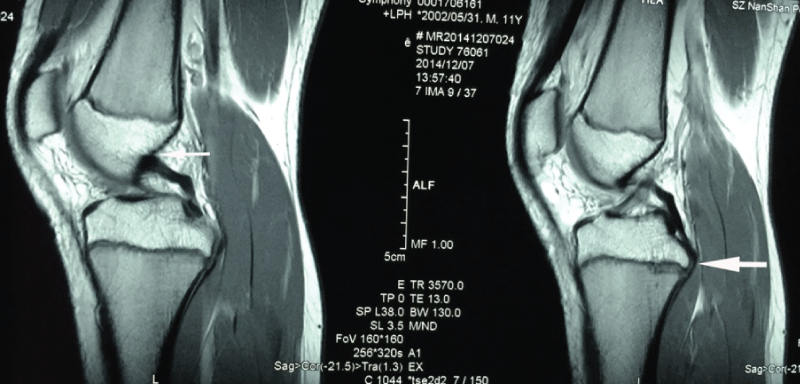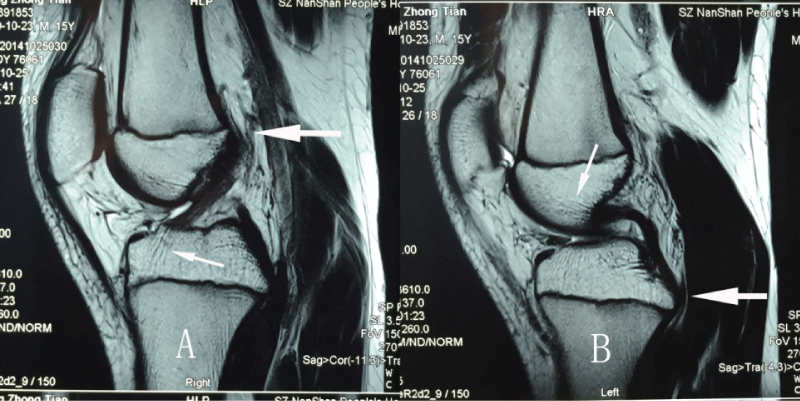The posterior cruciate ligament, often abbreviated as PCL, is a critical component of the knee joint that plays a vital role in stabilizing the leg during movement. While it may not be as commonly discussed as its counterpart, the anterior cruciate ligament, injuries to this structure can significantly impact mobility and quality of life. This article delves into the intricacies of posterior cruciate ligament tears, exploring their causes, symptoms, diagnostic methods, and treatment options.

Understanding the Posterior Cruciate Ligament
The posterior cruciate ligament is one of four major ligaments in the knee. It connects the thigh bone to the shinbone and is located at the back of the knee joint. Its primary function is to prevent the shinbone from moving too far backward in relation to the thigh bone. This ligament also helps maintain the alignment of the knee during activities such as walking, running, and jumping.
Unlike some other ligaments, the posterior cruciate ligament is strong and less prone to injury. However, when a tear does occur, it can lead to significant discomfort and instability in the knee. Understanding how this ligament works is essential for recognizing the signs of an injury and seeking appropriate care.
Common Causes of Injury
Injuries to the posterior cruciate ligament typically occur due to high-impact trauma or specific movements that place excessive stress on the knee. Some of the most common causes include:
- Car Accidents: A “dashboard injury” occurs when the knee hits the dashboard during a collision, forcing the shinbone backward.
- Sports Injuries: Contact sports like football, soccer, and rugby often involve sudden stops, pivots, or direct blows to the knee, which can result in damage.
- Falls: Landing directly on a bent knee, such as during a fall from a height, can strain or tear the ligament.
- Twisting Motions: Sudden twisting or hyperextension of the knee while bearing weight can also lead to injury.
While these scenarios are the most frequent culprits, any activity that places undue stress on the knee has the potential to cause harm to the posterior cruciate ligament.
Symptoms of a Torn Posterior Cruciate Ligament
Recognizing the symptoms of a torn posterior cruciate ligament is crucial for early intervention. The severity of symptoms can vary depending on the extent of the injury, but common signs include:
- Mild to moderate pain in the knee, especially when attempting to move or bear weight.
- Swelling that develops within hours of the injury.
- A feeling of instability or looseness in the knee joint.
- Difficulty walking or standing on the affected leg.
- Tenderness at the back of the knee.
It is important to note that some individuals with a mild tear may experience minimal symptoms initially, only to notice increasing discomfort or instability over time. This delayed onset can sometimes lead to a misdiagnosis or underestimation of the injury’s severity.
When to Seek Medical Attention
If you suspect a posterior cruciate ligament injury, it is advisable to seek medical attention promptly. Early diagnosis and treatment can prevent further damage and improve recovery outcomes. You should consult a healthcare professional if you experience any of the following:
- Persistent pain or swelling that does not subside with rest.
- An inability to bear weight on the affected leg.
- A noticeable deformity or unusual movement in the knee joint.
- Numbness or tingling around the knee or lower leg.
Diagnosing a Posterior Cruciate Ligament Tear
Accurate diagnosis of a posterior cruciate ligament tear involves a combination of physical examination, patient history, and imaging tests. A healthcare provider will begin by asking about the circumstances surrounding the injury and any symptoms you are experiencing.
Physical Examination
During the physical examination, the doctor will assess the range of motion, stability, and strength of the knee. Specific tests, such as the posterior drawer test, may be performed to evaluate the integrity of the ligament. In this test, the doctor gently pushes the shinbone backward while the knee is bent to check for abnormal movement.
Imaging Tests
While physical examinations provide valuable insights, imaging tests are often necessary to confirm the diagnosis and determine the extent of the injury. Common imaging techniques include:
- X-rays: These are used to rule out fractures or other bone-related issues, as they do not show soft tissues like ligaments.
- Magnetic Resonance Imaging (MRI): An MRI provides detailed images of the soft tissues in the knee, allowing doctors to identify tears and assess their severity.
- Ultrasound: This non-invasive test can help visualize the ligaments and detect abnormalities in real-time.
Treatment Options for a Posterior Cruciate Ligament Tear
Treatment for a posterior cruciate ligament tear depends on the severity of the injury and the patient’s lifestyle. In many cases, conservative measures are sufficient to promote healing, while more severe injuries may require surgical intervention.
Non-Surgical Treatment
For mild to moderate tears, non-surgical approaches are often recommended. These methods focus on reducing pain, restoring function, and preventing further injury. Key components of non-surgical care include:
- Rest: Avoiding activities that strain the knee allows the ligament to heal naturally.
- Ice Therapy: Applying ice packs to the knee several times a day can reduce swelling and alleviate pain.
- Compression: Wearing a compression bandage or knee brace helps stabilize the joint and limit movement.
- Elevation: Keeping the leg elevated above heart level minimizes swelling and promotes circulation.
- Physical Therapy: A tailored exercise program can strengthen the muscles around the knee, improving stability and flexibility.
Surgical Treatment
In cases where the tear is severe or accompanied by other injuries, surgery may be necessary. Surgical repair typically involves reconstructing the ligament using a graft, which is often taken from another part of the body or a donor. This procedure aims to restore the knee’s stability and function.
Recovery from surgery can take several months and requires a commitment to rehabilitation. Physical therapy plays a crucial role in regaining strength, mobility, and confidence in the knee.
Preventing Posterior Cruciate Ligament Injuries
While not all injuries can be prevented, certain strategies can reduce the risk of damaging the posterior cruciate ligament. These include:
- Wearing appropriate protective gear during sports or high-risk activities.
- Strengthening the muscles around the knee through regular exercise.
- Using proper techniques when engaging in physical activities.
- Maintaining a healthy weight to reduce stress on the knees.
Importance of Warm-Up and Stretching
One of the simplest yet most effective ways to prevent knee injuries is to incorporate warm-up and stretching routines into your exercise regimen. Warming up increases blood flow to the muscles and joints, making them more flexible and less prone to injury. Dynamic stretches, such as leg swings and lunges, are particularly beneficial for preparing the knees for physical activity.
Living with a Posterior Cruciate Ligament Injury
Managing a posterior cruciate ligament injury requires patience and dedication. Whether undergoing conservative treatment or recovering from surgery, adhering to your healthcare provider’s recommendations is essential for optimal outcomes. Regular follow-ups and open communication with your doctor can help address any concerns and ensure a smooth recovery process.
Additionally, adopting a proactive approach to knee health can enhance long-term well-being. This includes staying active, maintaining a balanced diet, and avoiding activities that place undue stress on the knees.





